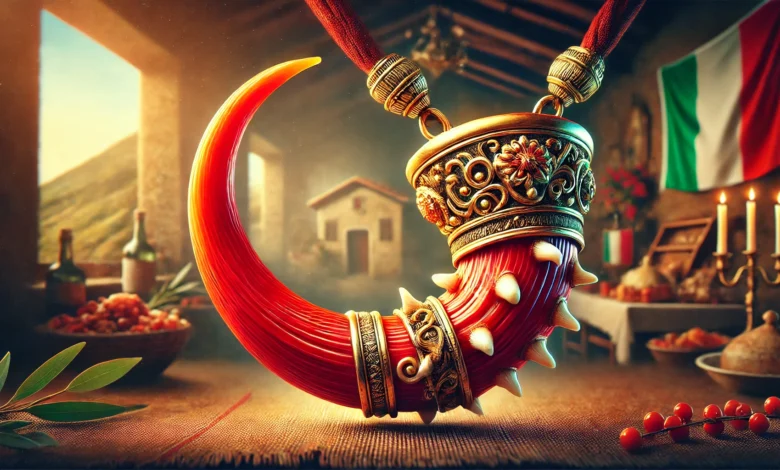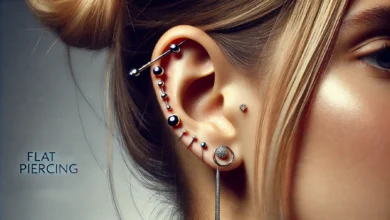Italian Horn: A Symbol of Protection, Luck, and Tradition

Introduction
Italians still wear the Italian Horn, or “Cornicello,” today as a charm to protect against malicious envy. Often made of gold, but more commonly of silver or red coral, it symbolizes protection and affluence. It has turned into a touching amulet all over the globe because of its cultural value.
Discover why the ancient Horn has transitioned into a beloved modern symbol of good luck.
Today, people still use the Horn as a symbol of protection and good luck, with some being centuries old. Deeply rooted in Japanese culture, this symbol draws admiration from those seeking protection against evil influences.
Understanding the Ancient Roots of the Italian Horn
The Cultural Importance of the Italian Horn Today
Today, the Horn remains an important cultural symbol to many people. Twisted and bright red, it is easily identified with good luck in addition to warding off negative energy. In Southern Italy people, especially men and women wear the horn as an amulet that would protect one from envy and negative energy. This tradition has gone a notch higher whereby the Italians in other parts of the world take this horn as one of their significant symbols. The Horn, deeply rooted in Italian traditions, now symbolizes positive associations and protection in modern culture.
The Italian Horn as a Modern Fashion Statement
Nowadays it is an ordinary accessory that has become a part of a contemporary fashionable trend. Today it is incorporated in many ways as necklaces, bracelets, earrings, and other forms, which are evident. The horn is easily recognizable by its form and is appreciated in any jewelries: gold, silver or studded with stones. Fashion designers have also considered this symbol in its design and came up with such luxurious models that would be valuable to both the conservative and the elites. With respect to its outlook and the history of its evolution, this accessory has become an indispensable item today’s Italians.
The Protective Power of the Italian Horn Against the Evil Eye
The evil eye is perhaps one of the more convincing properties of being a bearer of the Horn. An evil eye is a curse that is administered through a glare usually by another person and is believed in many cultures to be disastrous. Well, Italians have used it for ages in order to counter this particular kind of a curse and to minimize exposure to any points of negativity. This protective power is the reason why horn is hung round the neck or near the heart, some hung it in their houses and cars. In conclusion, the Horn remains essential as a protective amulet, symbolizing health and safeguarding against the evil eye.
How to Choose and Wear Your Italian Horn
Choose your Horn based on both its fashion appeal and its protective qualities as an amulet. The specific material that makes up the horn can affect the symbolism; it may be the gold, the silver, or the red coral. Gold horns are traditional and luxurious, while the appearance of silver is delicate and pretty. They are enchased in red coral which is attributed to have boosted the horn’s protective attributes, a feature that originated from Southern Italy. As accessories, most people wear the Italian Horn near the heart, either around the neck or inset in garments. Wearing the Italian Horn maximizes its protective effect while bringing you closer to Italy’s rich heritage.
The Italian Horn as a Meaningful Gift
Gifting an Italian Horn is considered a traditional practice. Whether it is when one is celebrating a family member’s or a friend’s birthday, a wedding ceremony, a promotion, or any other celebration, the horn conveys your goodwill for protection for the intended person. It is especially significant in Italy because the horn is not bought but inherited from one generation to the next. Being a symbol of the Italian culture and at the same time an ornamental item that could protect you from the evil eye, the Italian Horn is a perfect gift for any person. Owning an Italian Horn offers both a masterpiece of Italian craftsmanship and a timeless symbol of protection and tradition.
The Italian Horn in Popular Culture and Beyond
Some symbolisms go beyond cultural elements by imitating the Italian Horn, although in common culture. In Hollywood movies and Soap operas, on the fashion ramps, the horn has found its recognition across the globe. Thus, celebrities and influencers put on the Italian Horn and introduce its traditional meaning to a wider population. All these have gone a long way in ensuring that the horn remains fashionable while at the same time being symbolic. The Italian Horn’s integration into mainstream culture highlights its enduring functionality and popularity, uniting tradition with modernity.
The Future of the Italian Horn: Tradition Meets Innovation
As it stands now, the Horn is the throwback that establishes tradition as a meeting point of progress. Besides that, modern horn texts blend new materials, designs, and goals into the interpretation of the horn in order to fit it into the modern world. Although maintaining its original cultural reference of a protective talisman, the horn has moved with the world’s current trend and lifestyles. This adaptability will make the masses keep the Italian Horn as one of the most treasured additions for a long time to come. The Italian Horn’s future hinges on its dual role as a protective symbol and a stylish accessory in today’s world.
FAQ’s
What does the Italian Horn symbolize?
The Italian Horn symbolizes protection, good luck, and fertility, traditionally used to ward off the evil eye.
Can I wear an Italian Horn even if I’m not Italian?
Yes, the Italian Horn is a universal symbol that anyone can wear for protection and good fortune.
What materials typically make up Italian Horns?
Gold, silver, or red coral commonly make up Italian Horns, with each material carrying its own symbolic meaning.
Is it important to wear the Italian Horn close to the heart?
Yes, wearing it close to the heart maximizes its protective powers.
Can you give the Italian Horn as a gift?
Absolutely, it’s a meaningful gift that conveys protection and good luck.
Conclusion
People’s fascination with the Italian Horn as a protective symbol and its historical significance continues to resonate globally.. This bow embodies timeless beauty and grace, with a rich history, making it a cherished heirloom. The Horn amulet is worn around the neck and then held to the right ear to establish a protection and invocation of the horns as well as a symbol of good luck as worn today. Leaving the framework of historical traditions, the Horn is still included in the world of symbols and protects people from danger, making their lives happier. Accept the Horn for good luck and Italian heritage.




